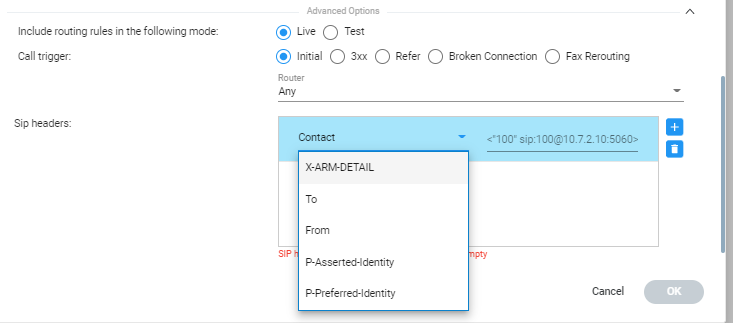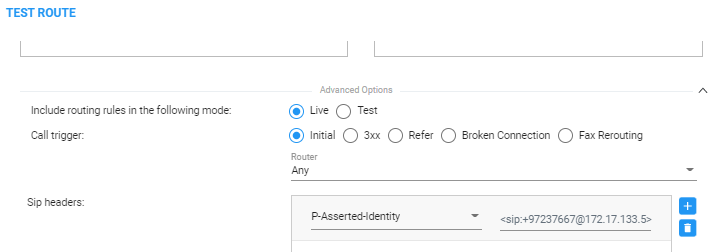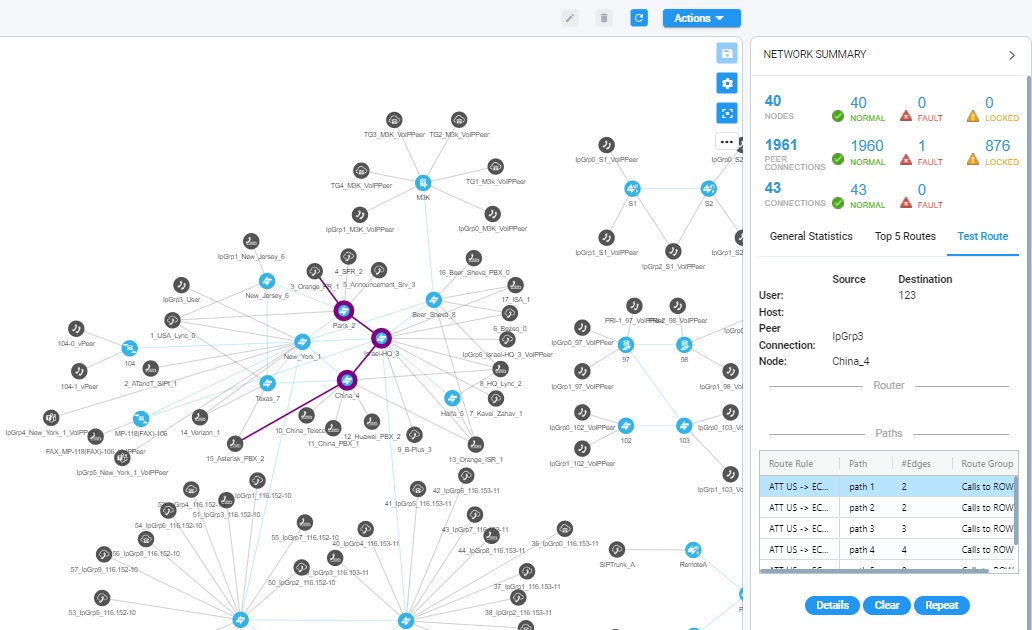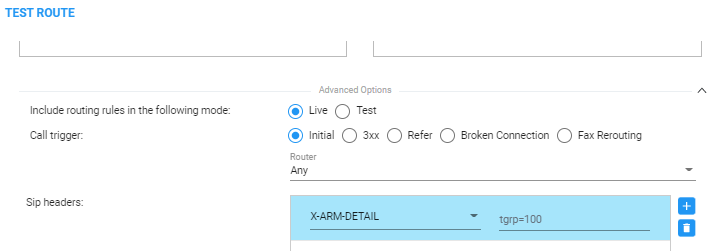Testing Call Routing Simulation with a Specific SIP Header
The Test Route feature includes the capability to simulate a call with a specific SIP header’s value. Before testing call routing simulation with a specific SIP header, you need to configure the manipulation of a specific Source URI header as described in Adding a New Routing Rule.
|
➢
|
To perform Test Route with simulation of SIP header value: |
|
1.
|
In the Test Route screen, expand the ‘Advanced Options’ screen section, add one of the headers and provide a value. Multiple headers can be provided as input for Test Route (multiple adds). The following SIP header types are supported: |
|
●
|
X-ARM-DETAIL [for simulation of ARM capabilities to route a call based on any SIP header value (capability also requires manipulation at the SBC level)] |
|
2.
|
Perform Test Route for SIP header simulation. Only one SIP header of each type can be added. However, more than one SIP header (up to three) of type X-ARM-DETAIL can be added. |
Test Route on multiple SIP headers simulation

|
3.
|
View the manipulated value, including the reason for the manipulation and the normalization rule that was applied, in the Test Route result in the details of the selected path. |
|
4.
|
Perform a Test Route with a P-Asserted-identity value simulation (for example). |
Testing a route with a P-Asserted-identity value simulation

|
5.
|
Click OK and view the Test Route results. |

|
6.
|
Under 'Paths', select the path and click Details to view its details showing the manipulation performed on P-Asserted-Identity. |

|
7.
|
Following is an example of manipulation of X-ARM-DETAIL and its testing. In the Routing Rule, under ‘SIP headers’ under ‘Advanced Conditions’, add the header name and its value: |
SIP Headers

|
8.
|
Perform a Test Route with the specific X-ARM-DETAIL value simulation: |
Test Route with X-ARM-DETAIL value simulation

|
9.
|
View the Test Route results. |





